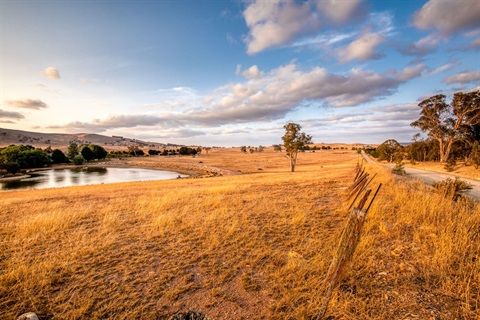Victoria's Climate Science Report

Victoria’s climate is becoming drier and we are experiencing more frequent and intense climate hazards, including floods, heatwaves and extreme heat, drought, bushfire, and sea-level rise. As global greenhouse gas emissions increase, these changes are projected to continue.
Victoria’s Climate Science Report(PDF, 4MB) provides a comprehensive look at the current and projected impacts of climate change on the state of Victoria.
Understanding of our vulnerability to environmental shifts is important for planning and policy decisions. Using this information can help us build community resilience, develop strategies for emissions reduction, and be better prepared for extreme weather.
Key findings include:
Temperature
Projections indicate longer, more intense and more frequent heatwaves and the concurrent occurrence of droughts and heatwaves.
The average annual temperature in Victoria has increased by around 1.2° since national records began in 1910, with a further increase of 1.1° likely by 2050 (compared to the 1986-2005 period), even if emissions are kept low.
The number of very hot days* has more than doubled since 2005. Inland locations have experienced larger changes with some areas of Victoria experiencing up to five times as many very hot days.
*Very hot days are defined as days with daily maximum temperature exceeding the 99.9th percentile.
Bushfires
Bushfire frequency and severity is increasing. There is strong evidence that climate change affects fire weather, with Victoria experiencing longer fire seasons and more frequent days of significant fire danger. These changes are likely to escalate with increasing global temperatures creating warmer and drier conditions and increasing ignition risk across the state.
Drought
Future droughts will be significantly hotter and more frequent than past droughts due to human-caused climate change. Future droughts may develop more quickly under a thirstier atmosphere with increases in duration and intensity.
Major historical droughts have affected large areas of Victoria and have occurred at least once per decade.
Rainfall
Victoria’s annual rainfall has decreased with extreme rainfall events almost doubling since 1985. Cool season rainfall has decreased by more than 10% leading to more extended dry periods and changing flood patterns.
Some of the rainfall declines in Victoria during the cool season months can be attributed to climate change and approximately 90% of modelling projects further drying in the southwest of the state.
While Victoria’s rainfall will continue to be variable over time, observed average cool season rainfall over the past two decades has been lower than predicted by global climate modelling.
Floods
Extreme flood events are projected to increase in magnitude in many parts of Victoria by 2100, with extreme rainfall events generally becoming more intense. There has been an almost 90% increase in intensity of extreme rainfall events and over the past 50-70 years Victoria has experienced an increase in the magnitude of large floods.
The Victoria’s Climate Science Report 2024(PDF, 4MB) and the Central Highlands Victoria’s Climate Science Report 2024(PDF, 1MB), which adds data specific to our region, can be downloaded through the links below.